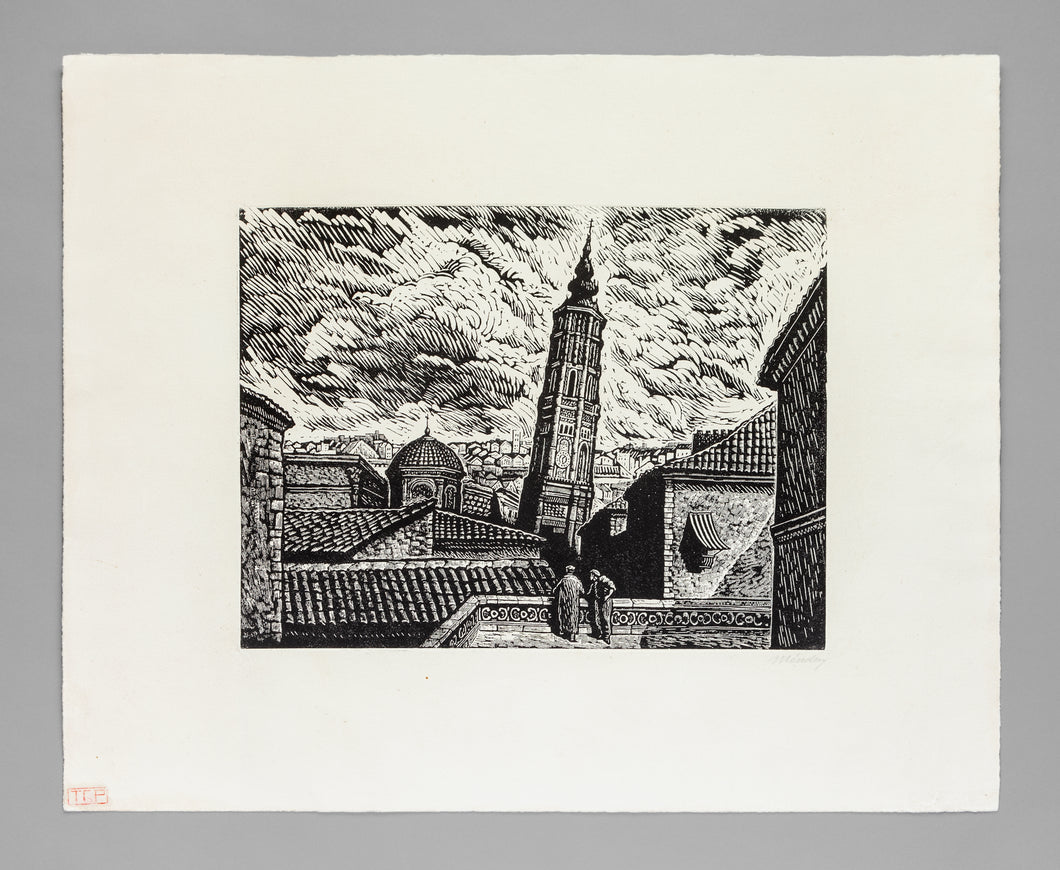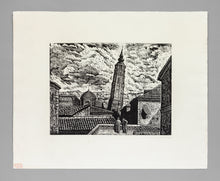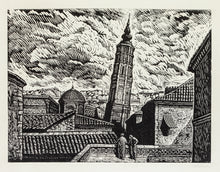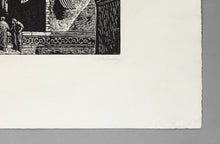Vista de Zaragoza, 1953 by Leopoldo Mendez (1902-1969)
Regular price
$700.00
Sale
Vista de Zaragoza, 1953
Leopoldo Mendez (1902-1969), Mexico City,
Linoleum block print, original TGP stamp in red, signed in pencil
17.5" x 21.5" paper size
excellent condition
Built in Spain in 1504, the 262-foot-tall Tower of Zaragoza began leaning soon after it was finished, likely because of its hasty construction. It kept tilting over time, and became one of the most famous leaning towers in Europe.
By the 19th century, the tower’s tilt had become so alarming the city council had no choice but to attempt to fix it. Hoping to salvage this iconic piece of the city’s skyline, officials removed its triple spire in 1878. But this still wasn’t enough. In 1892, the tower was demolished in what was described as the “greatest artistic crime committed in Spain." Its bricks were recycled and used in the foundations of new buildings.
Though the tower was demolished before Leopoldo Mendez was even born, this image reimagines what the skyline of Zaragoza, Spain must have been like before the tower came down. In the image, two workers contemplate the fate of this architectural wonder.
Leopoldo Méndez is widely considered the finest printmaker in the history of Mexico. In 1937, Méndez, Luis Arenal, and Pablo O’Higgins founded the Taller de Gráfica Popular (TGP). Established in Mexico City, the TGP (The People’s Print Workshop) was active through the 1960s, creating thirty-five major portfolios of woodcuts, linocuts and lithographs, and a total output of over 4,000 prints.
Mendez worked quietly. Preferring to be relatively anonymous during his life, Méndez did not gain immediate recognition. It was only after his death that art historians and museum curators began to realize the importance of his contributions. He now ranks among the greatest of twentieth-century Mexican artists, keeping good company with artists such as José Clemente Orozco, David Alfaro Siquieros, and Diego Rivera.
The Taller de Gráfica Popular (TGP) was a collective center for the creation of sociopolitical art. Sharing the post-revolutionary idealism of the Mexican muralists, the TGP aimed to reach a broad audience, primarily through the dissemination of inexpensive wood- and linoleum-block prints. The group’s declaration of principles announced, “The TGP believes that, in order to serve the people, art must reflect the social reality of the times and have unity in content and form.”





